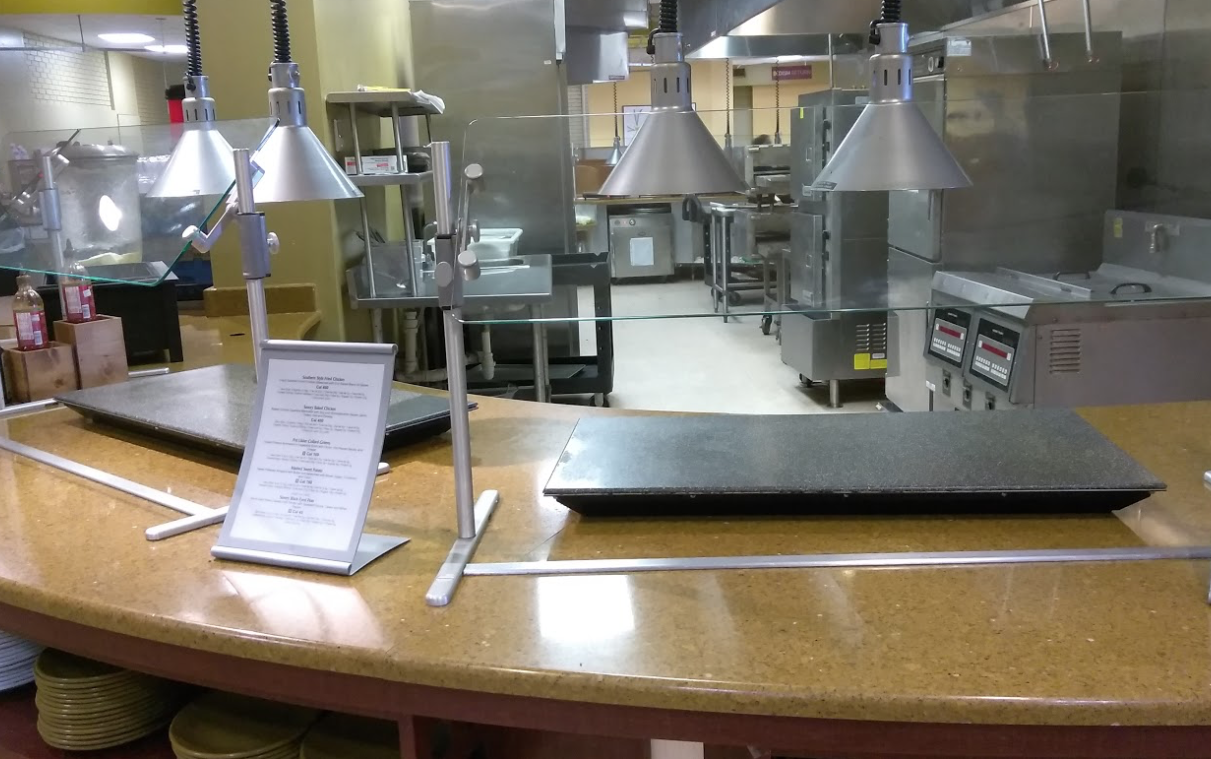Editor’s Note:
In our March 20 issue of The Johnsonian, an article entitled “Food allergies with a meal plan” ran in the Science and Technology section. This article incorrectly stated, “Sodexo does not use peanut oil in any dining operations, including Chick-Fil-a.”
According to Bryan Harriss, head of dining services at Winthrop “Chic-Fil-A uses canola oil for its waffle frieds but it does use peanut oil for all of its chicken products.”
As for the rest of the food options on campus, “all other food services on campus outside of Chick-Fil-A use vegetable oil for frying. This includes Thomson Hall, Tres Habeneros, The Grill, Concessions, and all catering foods provided to the university,” Harriss said. Signs have since been placed in dining areas to alert students of the types of oil each establishment uses.
It is The Johnsonian’s mission to provide factual information to the campus community at all times, especially in situations as dire as food allergies. Our staff works tirelessly to fact check everything we produce, however sometimes things get missed. We apologize for this mistep and will make sure to double down on fact checking to ensure that we are providing the campus community with the best news possible. Thank you for your support.
Food allergies are a common concern when it comes to food services and operations. Dining services have a few methods for accommodating students with food allergies.
People with specific diets or medical needs can come into the office of dining services to discuss their options, according to Sodexo general manager Bryan Harriss.
“We normally invite them in and sit down with them and [chef Bill Hofmann], and we go over what specific needs they need. We try to do it during a meal period, and then we’ll tour the operation and try to point out where they might want to be looking. That will allow them to follow the dietary restrictions we have,” Harriss said.
This process also includes exploring menus for the week so the person can plan their meals accordingly.
“Sometimes, each situation is very different or unique. Sometimes it happens on the phone, sometimes it happens with their parents,” Harriss said.
However, there was one incident where dining services was not able to accomodate for a student’s diet.
“This student’s dietary restrictions were such that I went to the school and told them ‘I don’t know if we can properly give them enough menu restrictions to have them eat on a regular basis,’” Harriss said. “They would’ve been eating almost the same thing everyday.”
Inquiries into food allergies usually concern Thomson cafeteria. Harriss said that if students felt like they were not getting enough variety, they also have the option of going to Markley’s, Starbucks, or Subway.
dining services does not always have to worry about having discussions with people with food allergies. He said people with food allergies “[are] good with figuring out for themselves what they need to eat and what they need to avoid.” The nutrition cards that accompanies every meal are required to display various ingredients in a dish. Harriss cited the example of Worcestershire sauce, which contain sardines.
“It’s used in a lot of dishes. You wouldn’t know that normally, but if you were allergic to fish, it’s important for people to know that,” he said.
Other ways Thomson cafeteria accommodates people with other conditions (e.g. lactose intolerance, high blood pressure) include minimal or low seasoning and various lactose-free options (e.g. almond milk, soy milk).
‘Simple servings’ and challenges to accomodation
‘Simple servings’ is a mini-station in Thomson that serves allergy-free meals only offered during lunch and dinner. It is located near the grill area to avoid cross-contamination.
“We have one person that prepares that food each day, because we can’t have cross- contamination. It’s made in a certain area. It’s stored in a certain area after its prepared,” Harriss said. “It offers ready-to-eat fresh and flavorful meals prepared without milk, eggs, wheat, shellfish, soy, peanuts, tree nuts or gluten.”
Harriss also said that anybody can eat there and cited an individual that gets their meals solely from the station, even though they have no food allergies.
A common issue with the ‘simple servings’ station is that it goes largely unnoticed. Harriss said he could not put it out in the main serving areas of Thomson because there needs to be “segregation of product.”
“It’s not overly exposed, therefore people don’t notice it. People who just come in and eat pizza every time never go to the Grill area and don’t see it,” Harriss said.
If people inquire about its location, dining services can direct them to it.
Harriss said that they plan on doing a “refresh” of Thomson cafeteria, which includes replacing current furniture, carpeting and constructing new spaces. Harriss said he would ideally like a standalone space for ‘simple servings’ toward the front. Combining Simple Service with vegetarian options was also a consideration.
He plans on expanding serving areas to put out more food. Currently, there are small heat tables and a limited amount of heat lamps, limiting food output. Harriss said this is why there are not as many vegetarian options in Thomson.
“Not enough room to put more stuff out,” he said. “If they’re not perfectly under those heat lamps, they fall out of the proper temperature zone. And if they fall out of the zone for a certain amount of time, you either need to toss the food or reheat it. You can’t just pop things out.”
EDITOR’S NOTE: The original article stated that Chic-Fil-A does not use peanut oil to fry their food on campus. This was incorrect. Chic-Fil-A uses canola oil for their fries and peanut oil for their chicken.




